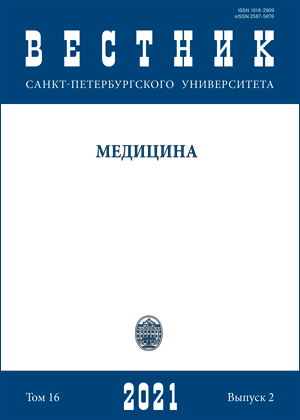Vascular dementia neurovisual markers according routine and diffusion-tensor MRI (publications’ review)
DOI:
https://doi.org/10.21638/spbu11.2021.205Abstract
The article presents review of the most significant neurovisual biomarkers-predictors of the cognitive disfunction caused by brain vascular pathology. Also given quantitative and qualitative characteristics of this pathology including localization that can be detected using routine and diffusion-tensor MRI. Following biomarkers were noted when using standard MRI protocols: atrophy of gray matter and white matter tracts and basal nuclei; white matter hyperintensities (foci of gliosis and periventricular leukoaraiosis), micro-bleeding (large vessels, white and gray matter deposits of hemosiderin), enlarged perivascular spaces (cystic enlargement of the penetrating arteries, arterioles, veins and venules), recent small subcortical infarcts and
post-ischemic damages in cortex, basal nuclei and white matter tracts. The article outlines diffusion tensor MRI latest developments for cognitive deficits’ risk assessment, such as threshold coefficients (indexes) of the fraction anisotropy, received in neocortex tracts (frontal and temporal lobes; fronto-thalamic pathway).
Keywords:
diffusion-tensor MRI, fractional anisotropy, vascular dementia, cognitive disorders, brain atrophy, lacunar strokes, subcortical strokes, white matter hyperintensity
Downloads
References
References
(Leukoaraiosis And DISability) study.J Neurol., 2014, vol. 261 , no. 6, pp. 1160–1169.
Downloads
Published
How to Cite
Issue
Section
License
Articles of "Vestnik of Saint Petersburg University. Medicine" are open access distributed under the terms of the License Agreement with Saint Petersburg State University, which permits to the authors unrestricted distribution and self-archiving free of charge.




